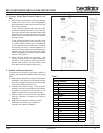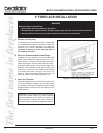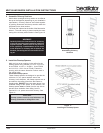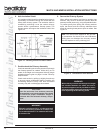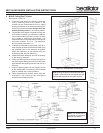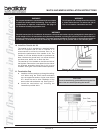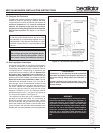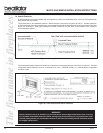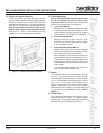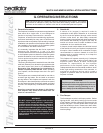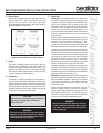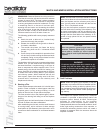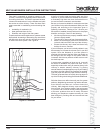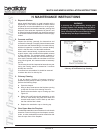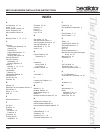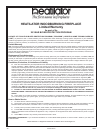
08/04 31072 Rev G 23
MHC36 AND MHR36 INSTALLATION INSTRUCTIONS
Figure 22
Proper Operating Positions of Bi-Fold Doors
WARNING!
Burning wet, unseasoned wood can cause ex-
cessive creosote accumulation. When ignited
it can cause a chimney fire that may result in a
serious house fire.
CAUTION:
When left closed while burning your fireplace,
firescreens and glass doors will be HOT.
Handle with care!
WARNING!
Do not store fuel within the clearances to com-
bustibles, or in the space required for refueling
and ash removal. See maintenance instructions,
“Clear Space Near the Fireplace”.
4. Glass Doors
Most efficient fireplace operation using glass doors is
with the doors open. When the doors are open, the
screen must be closed. Only Hearth & Home
Technologies glass doors may be used. See Figure 22
for proper glass door operation.
5. Grate
The factory installed integral grate must be used to
hold the logs from falling out of an open fireplace and
to allow air to pass between the burning logs. It is
important to keep the fire off the hearth and to allow
the ashes to collect beneath the fire, thereby forming
a layer of additional heat protection.
6. Firescreen
A firescreen is always provided to control sparks. It
must be closed whenever the fireplace is in use. Glass
doors or firescreens must not be used to hold burning
material inside the fireplace. Only those glass doors
specifically tested and listed for use with the specific
fireplace model should be used. Screens should be
closed when the glass doors are closed.
7. Wood Fuel
FIREWOOD: Your fireplace performance depends on
the quality of the firewood you use. All seasoned wood,
regardless of species, contains about 8,000 BTU’s per
pound, and hardwoods have a greater density than
soft woods. A piece of hardwood will contain about 60%
more BTU’s than an equal size piece of soft wood.
Firewood is commonly sold by the cord (128 cu. ft.). A
cord of seasoned oak (hardwood) would contain about
60% more potential energy than a cord of seasoned
pine (soft wood).
Soft woods are generally considered coniferous. These
are trees with needle-like leaves that stay green all
year and carry their seeds exposed in a cone.
Examples of soft wood trees are Douglas fir, pine,
spruce, and cedar. Soft woods require less time to dry,
burn faster and are easier to ignite than hardwoods.
Hardwoods are generally considered deciduous.
Deciduous trees are broadleaf trees that lose their
leaves in the fall. Their seeds are usually found within
a protective pod or enclosure. Some examples are oak,
maple, apple, and birch. It should be noted that there
are some deciduous trees that are not considered
hardwoods, such as poplar, aspen, and alder.
Hardwoods require more time to season, burn slower
and are usually harder to ignite than soft woods.
The best wood fuel is a combination of soft wood and
hardwood. Start the fire with soft wood; the fire will give
off quick heat to bring the appliance up to operating
temperature, and then the hardwood can be added for
slow, even heat and longer burn time.
MOISTURE: Regardless of which species of wood you
burn, the single most important factor that effects the
way your fireplace operates is the amount of moisture
in the wood. The majority of the problems fireplace
owners experience are caused by trying to burn wet,
unseasoned wood.
Freshly cut wood can be as much water as it is wood,
having a moisture content of around 50%. Imagine a
wooden bucket that weighs about eight pounds. Fill it
with a gallon of water, put it in the fireplace and try to
burn it. This sounds ridiculous but that is exactly what
you are doing if you burn unseasoned wood.



